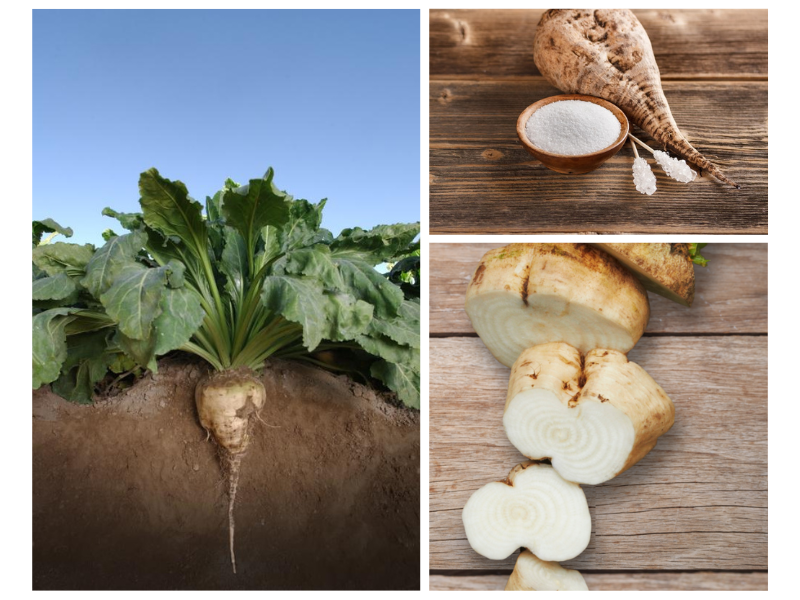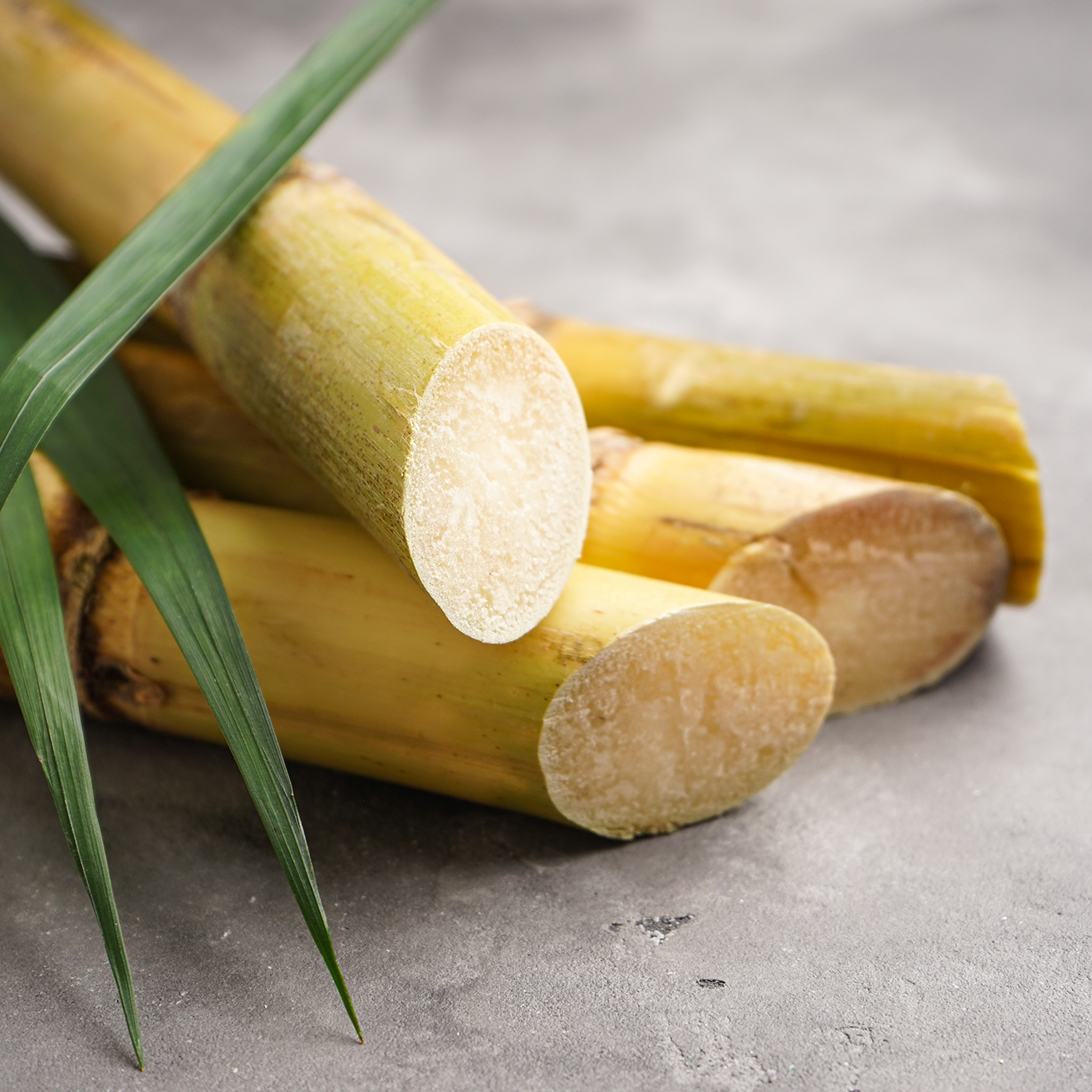Sugar beet vs sugar cane: Health benefits compared
Unveiling the Truth Behind Sugar Beet Vs Sugar Cane: Advantages, Utilizes, and Handling Techniques Discussed
The difference in between sugar beet and sugar cane is usually ignored in conversations concerning sugar production. Each plant offers unique benefits and applications in different markets. Their growing practices and processing strategies also differ notably. Recognizing these nuances is crucial for stakeholders in the sugar sector. What effects do these differences have for health and wellness, taste, and ecological effect? Checking out these facets can reveal much deeper insights into the worldwide sugar market.
Review of Sugar Beet and Sugar Cane
Sugar beet and sugar cane are 2 key resources of sugar, each with distinctive characteristics and cultivation methods. Sugar beet, an origin vegetable, thrives in pleasant environments and is normally collected in the autumn. Its high sugar content, varying from 15% to 20%, makes it a valuable plant for sugar production. The procedure includes drawing out juice from the beetroots, which is after that improved into granulated sugar.
On the other hand, sugar cane is a tropical lawn that prospers in warm, moist atmospheres. It can achieve a sugar content of up to 14%, but its high, coarse stalks require substantial processing. The cane is crushed to extract juice, which undergoes boiling and formation to create sugar. Both resources add considerably to the worldwide sugar supply, with sugar beet mainly grown in Europe and The United States And Canada, while sugar cane is chiefly grown in Brazil, India, and other tropical areas.
Cultivation Practices: Sugar Beet vs. Sugar Cane
Farming practices for sugar beet and sugar cane vary considerably due to their distinctive growing problems. Sugar beets flourish in cooler climates with well-drained dirt, while sugar cane chooses warmer temperature levels and plentiful dampness. In addition, the harvesting strategies employed for every crop mirror these ecological needs and affect overall yield and high quality.
Growing Conditions Contrast
While both sugar beet and sugar cane flourish in details ecological conditions, their growing techniques vary noticeably. Sugar beet is mostly grown in warm regions, favoring cooler environments with well-drained soil and modest rains. It requires an expanding period of about 90 to 120 days, with excellent temperature levels in between 15 ° C to 25 ° C. In contrast, sugar cane flourishes in exotic and subtropical environments, growing in cozy temperature levels varying from 20 ° C to 32 ° C. It requires abundant sunshine and regular rains, commonly requiring watering in drier areas. Sugar cane has a longer growing cycle, normally lasting 12 to 24 months. These distinctions in expanding problems considerably affect the geographical circulation and farming practices connected with each plant.
Harvesting Methods Differences
The harvesting methods for sugar beet and sugar cane mirror their distinctive growth attributes and farming practices. Sugar beet is usually gathered mechanically, with farmers made to root out the whole plant, making certain minimal soil disturbance. The beets are then moved for handling shortly after harvest to maintain quality. On the other hand, sugar cane harvesting typically entails a mix of guidebook and mechanical approaches. Employees may at first reduce the cane by hand, especially in areas where mechanization is less possible. Subsequently, specialized machinery is employed to collect and move the cut stalks to refining facilities. These differing techniques not only influence efficiency however additionally affect the quality and yield of the final sugar products, showcasing the versatility of each crop to its setting.
Nutritional Comparison and Health Advantages
When comparing the dietary accounts of sugar beet and sugar cane, it becomes clear that each deals distinctive health advantages. Sugar beets are abundant in important nutrients like folate, manganese, and potassium, which add to general health. They additionally contain fiber, which aids digestion and might assist manage blood glucose levels. In addition, sugar beetroots are known for their antioxidant properties, which can combat oxidative stress.
Alternatively, sugar cane is mainly made up of sucrose, giving fast power. While it lacks the very same level of nutrients located in sugar beetroots, sugar cane does include percentages of B nutrients such as calcium and magnesium. Moreover, sugar cane juice is usually proclaimed for its hydrating homes and potential health and wellness benefits, consisting of enhanced digestion health and wellness. Eventually, the selection between sugar beet and sugar cane might depend upon private wellness goals and dietary preferences.
Taste Accounts and Culinary Makes Use Of
Taste profiles of sugar beet and sugar cane vary noticeably, influencing their cooking applications go to the website (Sugar beet vs sugar cane). Sugar cane, with its naturally pleasant and complex taste, is commonly preferred in beverages, treats, and various culinary dishes. It lends a rich, caramel-like note that boosts the preference of things such as syrups, molasses, and rum. On the other hand, sugar beet has a much more neutral and less aromatic taste, making it appropriate for applications where sweetness is preferred without altering the meal's fundamental tastes. It is often made use of in refined foods, baked products, and sugar
Cooking specialists usually select sugar cane for its depth and splendor, especially in exquisite cooking and craft drinks. Alternatively, sugar beet's convenience as a sugar in mass-produced products satisfies a wider market. Inevitably, the option between these 2 sugars can significantly affect taste profiles and total cooking experiences.
Ecological Influence of Sugar Production
Sugar manufacturing, whether from sugar beet or sugar cane, carries considerable ecological implications. Sugar cane cultivation frequently leads to deforestation, specifically in exotic areas, interfering with local ecosystems and adding to biodiversity loss. The substantial usage of fertilizers and pesticides in both sugar beet and sugar cane farming can lead to dirt deterioration and water pollution, influencing surrounding habitats and communities. Additionally, the high water consumption required for sugar cane watering presents a threat to local water materials, especially in arid areas.
On the other hand, sugar beet farming usually happens in pleasant environments, which may minimize some logging concerns. Nevertheless, it is not without its very own obstacles, including soil disintegration and dependence on chemical inputs. On the whole, the ecological influence of sugar production is complex, requiring sustainable farming practices and recognition of source monitoring to lessen damage to environments and advertise ecological health and wellness.
Processing Methods: From Plant to Sugar
Countless processing methods are employed to change sugar beet and sugar cane into granulated sugar, each approach showing the unique qualities of the source plant. For sugar beetroots, the process starts with cleaning and cutting the roots into thin strips, which are after that subjected to diffusion-- a method where hot water essences sugar from the beet pieces. The resulting fluid is detoxified, focused, and crystallized.
In comparison, sugar cane handling includes squashing the stalks to remove juice, complied with by explanation to get rid of impurities. The juice more tips here is then vaporized, leading to syrup that goes through crystallization. Both processes are complied with by splitting up of the sugar crystals from the molasses, which is a byproduct. The lasts include drying and packaging the granulated sugar for circulation. These techniques highlight the distinct paths where these two plants yield sugar, each with its own collection of obstacles and performances.
Financial Facets of Sugar Beet and Sugar Cane Industries
The financial landscape of the sugar beet and sugar cane markets reveals notable differences in manufacturing expenses, market dynamics, and regional impacts. Sugar beet, primarily expanded in warm environments, commonly sustains higher manufacturing prices due to labor and input expenditures. On the other hand, sugar cane flourishes in tropical areas, usually taking advantage of lower labor prices and desirable weather conditions, which can lead to greater yields.
Market characteristics also differ, as sugar cane controls international production, making up roughly 80% of sugar output. This frequency influences prices frameworks and trade circulations. On the other hand, sugar beet is a lot more regionally focused, particularly in Europe and The United States and Canada, affecting local economic situations dependent on beet production.
Variations in global sugar costs can substantially affect both sectors, affecting farmer income and investment levels. Recognizing these economic facets is important for stakeholders aiming to navigate the intricacies of the sugar market successfully.

Often Asked Concerns

Can Sugar Beet and Sugar Cane Be Intercropped Successfully?
Intercropping sugar beet and sugar cane offers difficulties because of differing growth requirements and ecological demands. With cautious management and appropriate conditions, it may yield benefits such as boosted dirt wellness and source performance.

What Are the Historical Beginnings of Sugar Beet and Sugar Cane?
The historic beginnings my website of sugar beet trace back to 18th century Europe, while sugar cane has origins in Southeast Asia, grown for thousands of years. Both plants have significantly influenced worldwide sugar manufacturing and farming.
How Do Sugar Beet and Sugar Cane Affect Dirt Health?
The impacts of sugar beet and sugar cane on soil wellness vary. Sugar beet can boost dirt structure and nutrient material, while sugar cane may deplete nutrients if not taken care of properly, impacting long-term dirt fertility.
Are There Any Type Of Arising Technologies in Sugar Production?
Arising technologies in sugar production include accuracy agriculture, progressed hereditary engineering for higher yields, and ingenious extraction methods. These developments intend to enhance performance, minimize ecological impact, and enhance the general sustainability of sugar manufacturing procedures.
What Are the Secret Differences in Labor Demands for Both Plants?
The essential differences in labor requirements for sugar beet and sugar cane depend on planting, harvesting, and handling. Sugar beet vs sugar cane. Sugar beet generally requires more automation, while sugar cane commonly needs much more hand-operated labor for gathering and processing phases